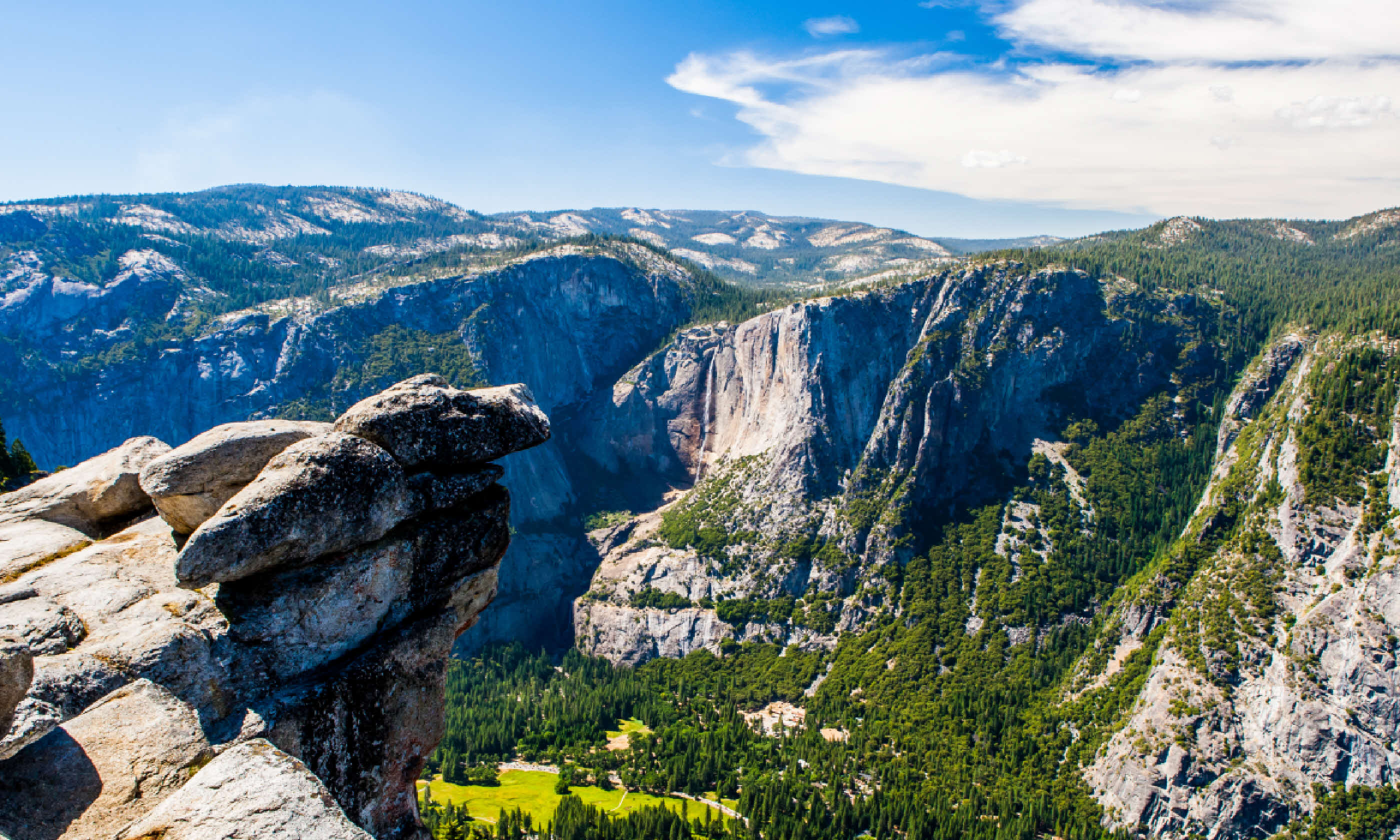
Hiking in Yosemite National Park, USA
Take a high-class hike into the backcountry of this premium wilderness. Aaron Millar laces up his boots...
The high country of Yosemite is wild and vast and guards its secrets well. From where I had arrived, standing on the edge of Tunnel View – a vista made famous by the great photographer Ansel Adams – the Sierra Nevada rose like jagged cathedrals of stone. Sunbeams broke over the neck of Clouds Rest ridge and the cracked edifice of Half Dome – one of the most iconic peaks in the world – cut like a shark’s fin through the mist of the valley.
Four million visitors a year come to Yosemite; most never stray from this lowland view. Headlights snaked through the sunrise, crowds chattered. But my eyes gazed upwards. There’s a silence and a glittering emptiness in the High Sierra that dares you in.
And that’s why I was here. October 2015 marks the 125th anniversary of Yosemite National Park – 3,100 sq km of northeastern California, filled with waterfalls, high alpine lakes and granite giants smoothed over the centuries like enormous slabs of silk.
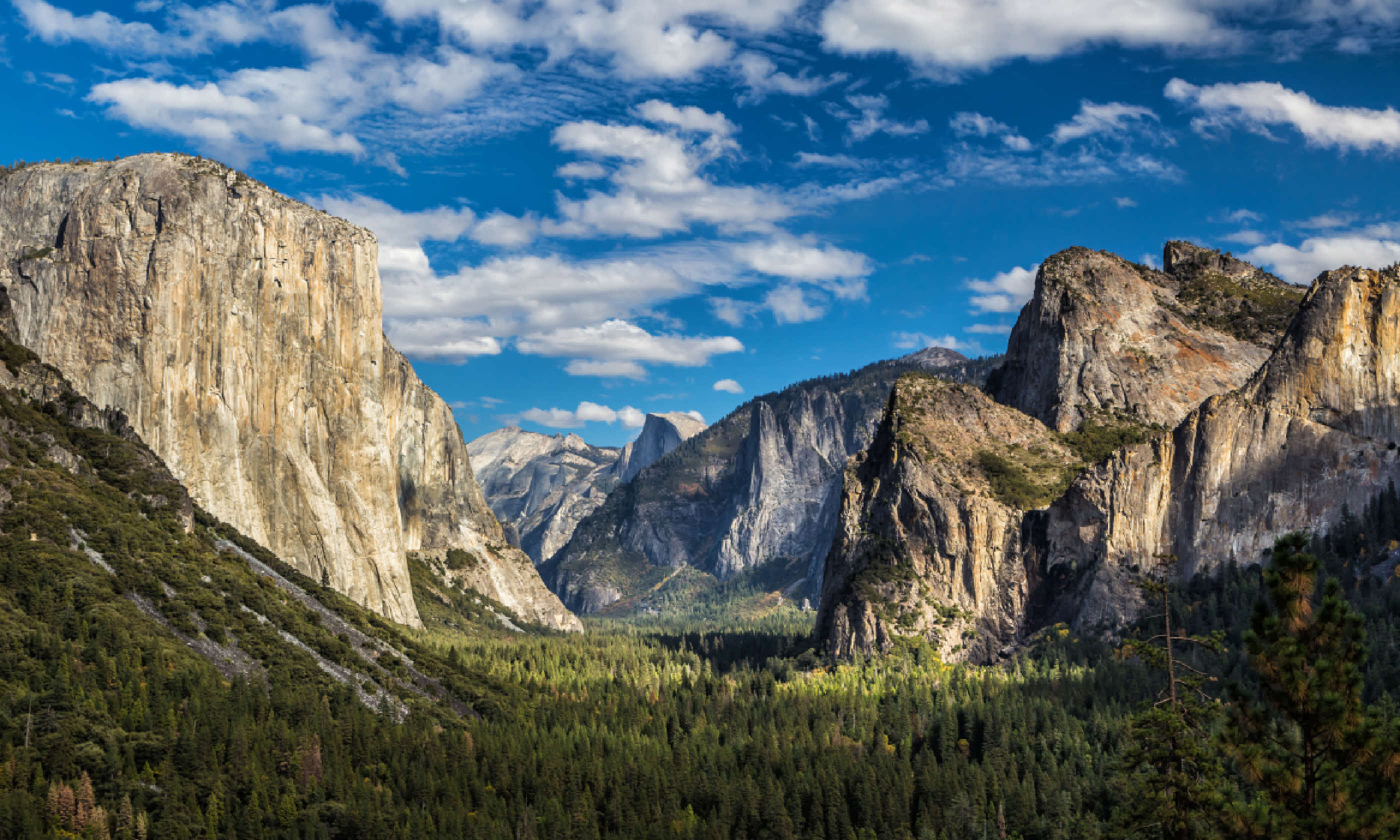
Yosemite National Park Valley
When it was founded, Yosemite was a groundbreaking statement. The end of the 19th century was a time of industrial progress over nature; that these wild lands should be left untouched and actively preserved was a revolutionary idea. And it spread. Yosemite was the first government-protected wilderness area in the USA, and its second surviving national park.
Now there are 59 in the country and thousands of others around the world. One man in particular was instrumental in that cascade. John Muir, the legendary naturalist and grandfather of the environmental movement, spent a summer working as a shepherd in Yosemite in 1869. His account of that time,
My First Summer in the Sierra, has since become a seminal text in environmental literature, helping to spread the concept of conservation around the world.
He later spent decades lobbying for the formation of the national park, wrote dozens of magazine articles and numerous books about Yosemite, helped extend and draw up its boundaries, and founded the Sierra Club – now America’s largest grassroots environmental organisation, with more than two million members.
To celebrate the anniversary I planned to go back to the high country that inspired Muir and led to the Yosemite we know today. I wanted to discover something of that remote wilderness, which – 125 years on – is still largely unaffected by human touch. But while Muir slept out in the open and hiked with nothing more than a few scraps of hard bread in his pocket, I had something altogether more civilised in mind.
Well-heeled hiking
Catered camping is the premium economy of the backpacking experience. Not quite the first-class glamping suite masquerading as a tent, but not the cold ground and freeze-dried food of economy canvas-dwelling either. I planned to walk the High Sierra Camp Loop: a 79km long-distance trail through the backcountry of the park, serviced by six catered camps along the way – many of which have been pampering visitors for close to a century.
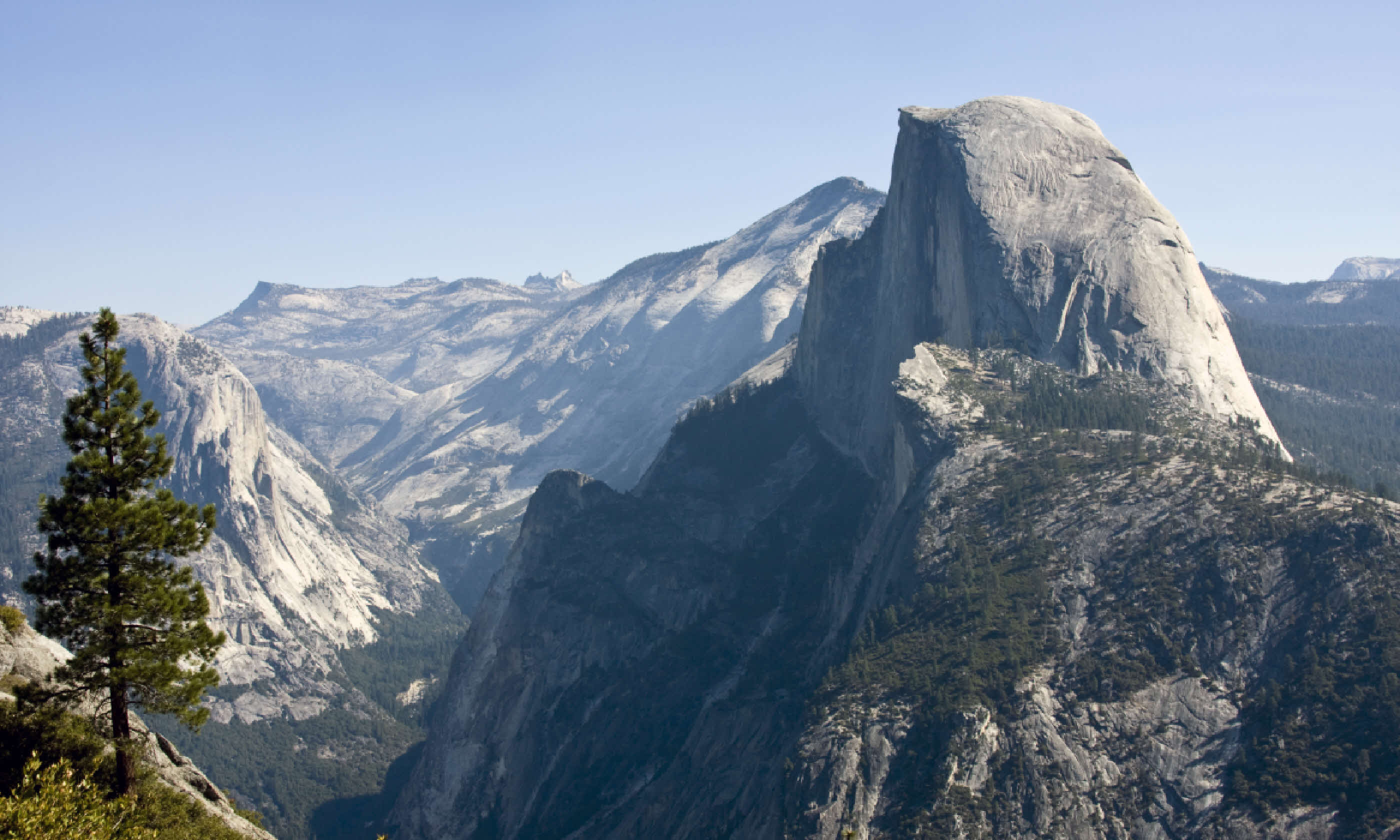 Half Dome mountain
Half Dome mountain
They provide shared bunk-style tented cabins, hot meals and decent toilets. You carry a light pack, have no chores and feel like a camping king. “It’s backpacking for the moderately well-off,” one bunkmate, Terry, was to tell me. “You feel less like a mule.”
The walking, of course, is still down to you. It’s possible to do the loop in either direction, but it’s easiest to start and finish in Tuolumne Meadows, the main backcountry hub, 90km north of Yosemite Valley. However, limited availability – the park’s Achilles heel – meant that I’d be starting at May Lake trailhead, the far west of the loop, and making my way round clockwise instead.
The usual five camps and six days to complete the route became three camps and four days. No problem, I thought, I like a challenge. And then I climbed the first mountain.
In the loop
Mount Hoffman is the geographical centre of the park. From its 3,300m-high bare, rocky summit, Yosemite unfolds in a breathless 360° panorama of brush-stroked granite peaks, like storm waves frozen in place.
It was one of Muir’s first mountains in the Sierra, so it would make a perfect start for me too. But it wasn’t easy. I gasped, sweated and switch-backed until the shade of the forest gradually faded and the route became sporadically lined with lonely, wind-broken trees.
As I climbed, secret valleys began to appear too, with dark lakes edged in turquoise and distant peaks shrouded in wildfire smoke blowing in from the east. Near the summit I lost the trail, emerging suddenly on the edge of a 600m precipice, my hands white-knuckling the rock as if my body might spin into the air. But it was worth the struggle: the beauty of a view is relative to the effort required to see it – and the best are always hard won. I walked to the edge of the precipice and howled at the world below.
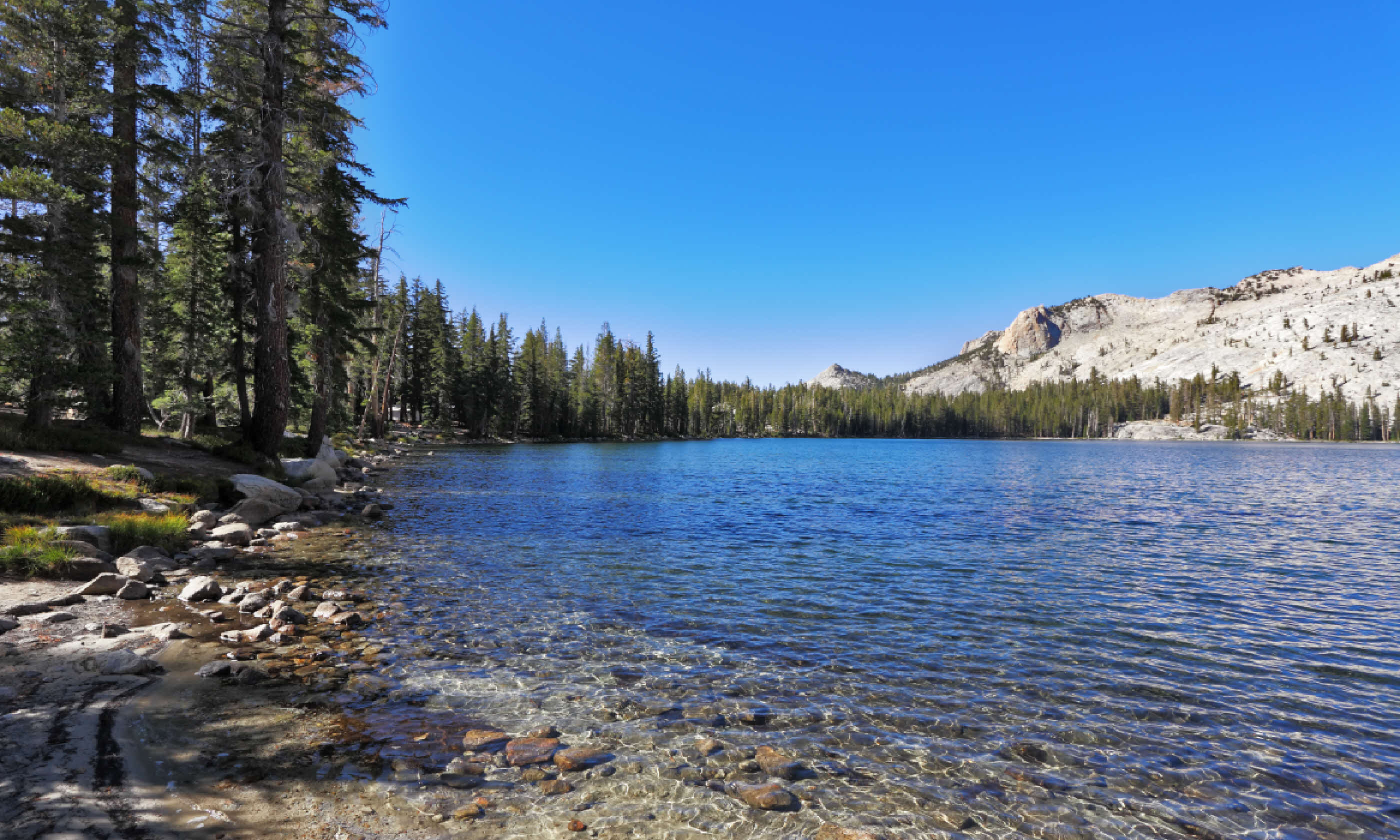 May Lake (Shutterstock)
May Lake (Shutterstock)
My first night was spent at the base Mount Hoffman in May Lake camp – eight canvas tent-cabins on the edge of the water with the tag line, ‘Defining utopia since 1938’. Inside each one were four dormitory-style steel frame beds stacked toe-to-toe, plus warm blankets, a fluffy pillow and a wood-burning stove.
Outside, children squealed in the cold shallows, fishermen cast off rocks and a couple snoozed in sunny reeds nearby. We had hot drinks at sundown – cocoa, coffee and a proper cup of tea – and then filed into a communal dining tent for fresh-baked bread, soup, pasta and a spicy apple crumble, all served in big help-yourself pots.
As we ate, a deer suddenly peered in from one of the windows, giving us all a shock. “Don’t worry,” camp manager Brian Shoores said, “we pay those guys to scare the bejeesus out of you when you go pee in the night.”
After dinner, Brian told us stories about the park’s history, including a unique Yosemite tradition known as ‘the firefall’. In the late 19th century, before the park was even signed into existence and the first tourists were just beginning to arrive, an enterprising Irishman named James McCauley built a hotel on Glacier Point, overlooking a sheer drop of 900m to the valley floor. Business was tough, so one night he built a bonfire on the edge of the cliff to attract customers, but when no one showed he kicked the embers off the ledge in dismay.
Those that saw the fire falling from below were amazed at the spectacle. He had a hit. For almost 100 years, until the practice was stopped in 1968, visitors would shout up at sundown to Glacier Point for the fire to fall and a river of flames would come tumbling down.
Finding the spark
The next morning I set off for Glen Aulin, 12km north – a beautiful camp beside a 24m waterfall; I dived into its icy pool at the end of the long, hot day.
Then, the following day, I looped my way southwest, a hard 33km to the high alpine pass of Vogelsang. Rather than stay at the camp there, I dropped steep and fast to Merced Lake – an old cavalry station-turned-camping ground, shaded in a grove of enormous old-growth trees. I swam in secret lakes, picnicked on hidden beaches and fell asleep on slabs of warm stone.
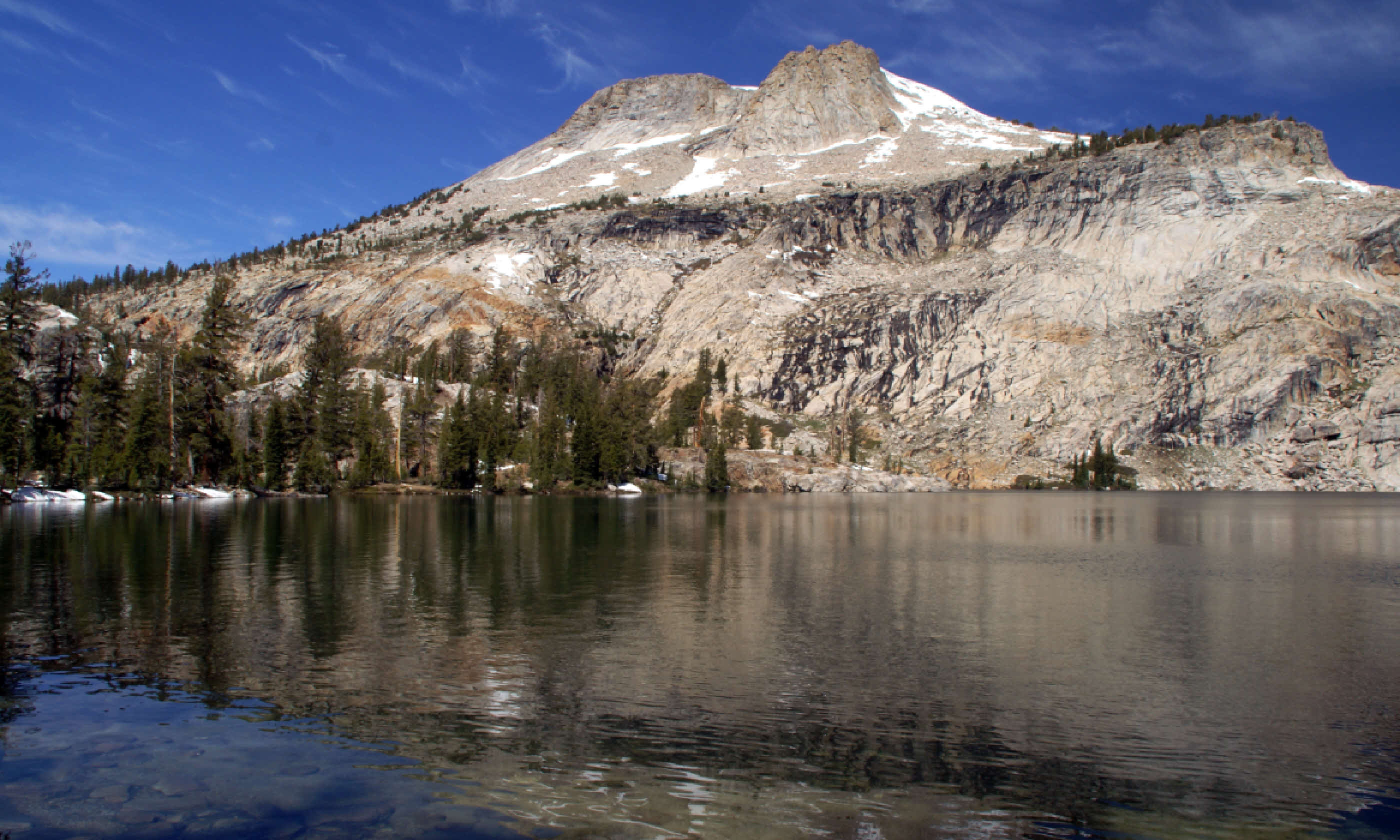 Mount Hoffman
Mount Hoffman
I watched the sunrise reflected in mirror water and the Milky Way light up in the arc of a new moon. I hiked hard, till my heels ripped and my shoulders burned. But I lingered too, noticing small details: the scent of pine needles warmed by the heat of summer, how wildflowers spring from the ash of lightning-burnt forests.
But it was the variety of the terrain that set Yosemite apart. In a single day I’d scramble up rocky crags, cut through forests, jump creeks and trace sandy paths through meadows glowing red with bracken. It was like walking through a film set with the backdrop on ever-changing loop.
There was space too. Immense rocky spires rose from the valley like enormous stone totems. Dizzying views opened up on every corner. It felt like a land of giants: too big and uncontained to be real. The more I walked, the more I felt like I was falling.
Camp life fell into an easy routine too. Breakfast was hash browns, sausages and eggs, and French toast smothered in maple syrup. The loos were glorious, shining things. I opened the first dark-wood shack with a pinched nose but found flushing water and glistening porcelain that would have put my student digs to shame. Every night was like your mum’s best dinner – salmon smothered in horseradish aioli, pulled pork, homemade chocolate cake.
I made friends and shared cabins with different bunkmates each night, including a pair of gung-ho grannies who giggled when I got changed for bed.
Without the usual backpacking chores of setting up tents, cooking and cleaning, there was time to relax too. I met one couple who spent the entire day just reading books by the river. “It beats the pool at the Hilton,” they told me. But the simple luxuries didn’t take away from the dirt and camaraderie of the outdoors. It felt like the Goldilocks zone of adventure – not so tough your holiday becomes a hardship, not so soft your adventure disappears.
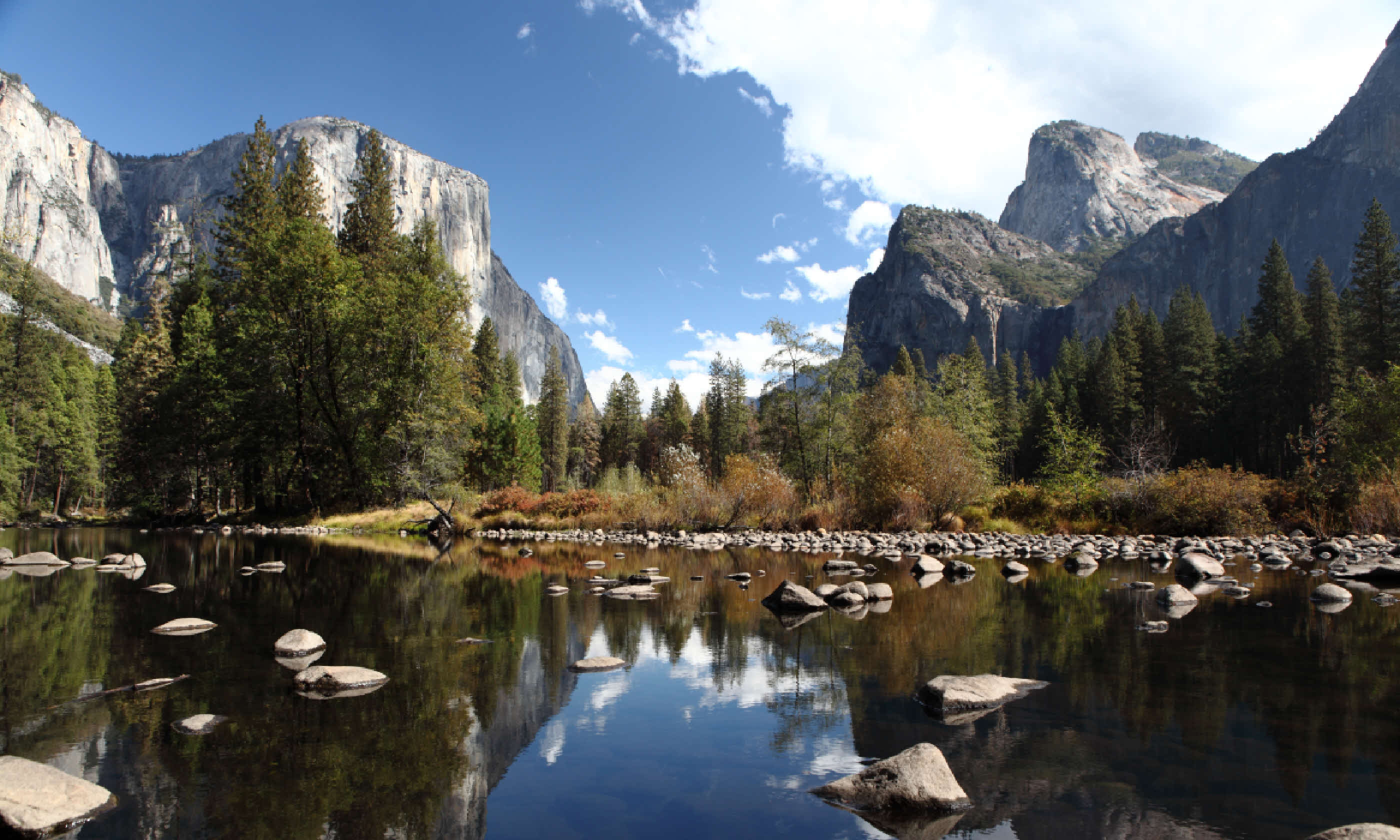 Merced River reflection (Shutterstock)
Merced River reflection (Shutterstock)
On my last night we sat around the campfire with Ranger Mike from the National Park Service, who was leading a group through the High Sierra. He played guitar, told stories and even made us all stand up and enact a little campfire dance – mortifying for an Englishman but, surrounded by American enthusiasm, I joined in.
He also talked about conservation. Yosemite has dozens of programmes, from restoring groves of giant sequoias to monitoring populations of endangered frogs. But the broader purpose of the park, he said, transcends its boundaries. Conservation, he explained, is fed by a love of the outdoors; apathy can be starved with a single sunset. “That’s what I do,” he said. “I set a spark in people.”
Up in the clouds
The final day was the hardest, but also the most spectacular. Clouds Rest – that peak I saw in distant silhouette on my first sunrise in the park – is a knee-tremblingly thin knife-edge ridge with enough air on either side to cower a goshawk. I’d had fear of heights before, but nothing like this. Four billion years of evolutionary common sense were screaming at me to get down. But I persevered and, in a torrent of swear words and sweat, somehow scrambled on all fours to the top.
It was like nothing I’d experienced before: a peak so exposed it felt more like parachuting than standing on solid ground. On a clear day it’s said you can see all the way from Nebraska in the east to Hawaii in the west. Well, perhaps not. But it was a magnificent outlook.
I could trace the route of the High Sierra Camp Loop too: Mount Hoffman where I began; the sharp ridges of Vogelsang Peak; Little Yosemite Valley falling 1,800m to the ground below. It has taken me 19km, seven hours and more than 900 vertical metres to get here that day – and I still had 11km to trek down. That summit took all my water, parched my throat and bled my feet. But it was worth the pain. There are moments in the mountains that you carry forever.
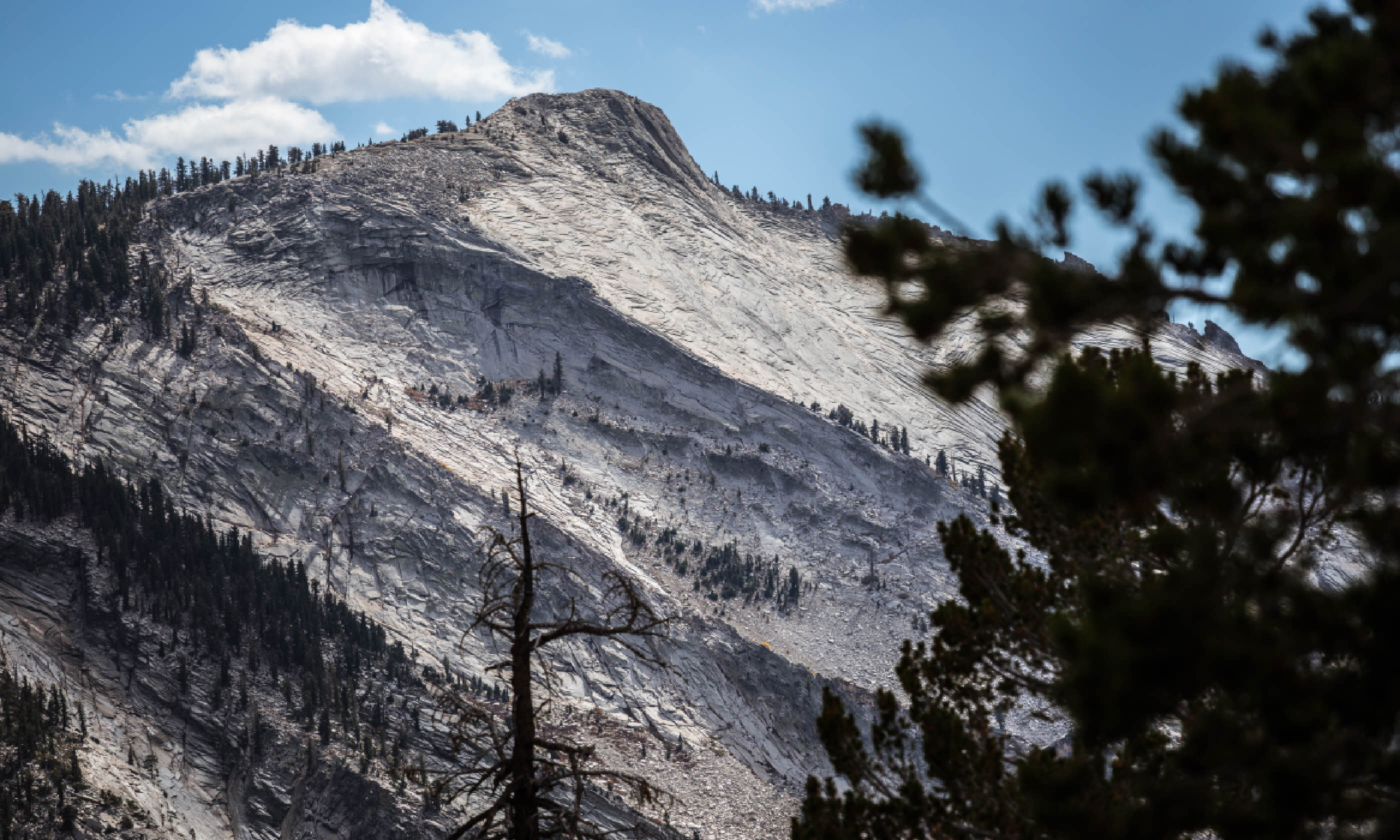 Clouds Rest, viewed from Tuolumne Meadows
Clouds Rest, viewed from Tuolumne Meadows
And there was still one moment left. As I staggered down from the high country at the end of the day, delirious in a daze of thirst and dirt, my legs burning and numb, I came across a lake of pure lilac surrounded by granite domes and thick log-pole forests. Sitting at the base of May Lake trailhead, Lake Tenaya marked the end of my journey and I threw off my clothes and jumped into the soft water in triumph.
Muir had envisioned a place where ‘thousands of tired, nerve-shaken, over-civilised people [would begin to find out] that going to the mountains is going home; that wildness is a necessity’. Perhaps that’s the secret Yosemite’s high country dares us to find. I looked up one last time and smiled. There was still silence and a glittering emptiness, but the wildness was in me now too.
Make it happen...
Getting around
Hiring a car is the easiest way to get to Yosemite, and useful (though not essential) to have inside the park.
Affordable Car Hire has cars from £18 a day. Alternatively,
YARTS runs buses to the park from Sonora, Merced, Fresno and Mammoth Lakes; returns cost around $30 (£20).
Greyhound Buses run from San Francisco to Merced multiple times daily to connect with YARTS. Free shuttlebuses run throughout the park.
Accommodation
The High Sierra camps cost $180pppn (£118) including breakfast, dinner and lodging. Due to high demand, reservations are available on a lottery basis with applications accepted September and October, and winners notified in January. Any remaining spaces
can be booked from the end of January.
Food & drink
Breakfast and dinner are included at the
High Sierra camps. Packed lunches can be purchased on site for $16 (£10). Take additional snacks, which can be purchased in Yosemite Valley, Tuolumne Meadows or Crane Flats before setting off. Alcohol is not available at the camps. For a delivery charge of $5 (£3.25) per pound-weight, booze can be brought up by mule train; arrangements must be made in advance.






